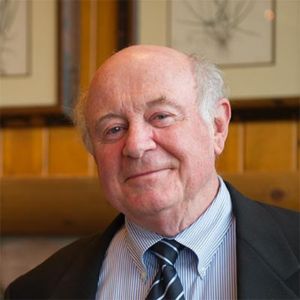Analysis — The Uncertain Future of Teaching: How Personalization, Specialization, Soft Skills, and a Talent Shortage Could Reshape the Profession

This essay also appeared in CRPE’s 25th anniversary collection, Thinking Forward: New Ideas for a New Era of Public Education
Platitudes about lifelong learning are hardly new in education, but they seem especially urgent today. As Thomas Friedman writes, “When the pace of change gets this fast, the only way to retain a lifelong working capacity is to engage in lifelong learning.” A rapidly changing future has implications not just for learners. What might it mean for who teaches what and how?
We won’t fully know the answer to this question until schools, districts, professional networks, colleges of education, and other institutions develop and test new approaches to training, instruction, and employment. But in the meantime, emerging ideas and clues from today’s innovators suggest that major changes are in the offing for teachers — particularly when it comes to what teachers need to know, and how they work together.
New areas of teacher expertise: Soft skills and personalization
The authors of CRPE’s 25th anniversary collection of essays and other futurists argue that teachers must do more than prepare students academically in the coming decades. This essay highlights two additional areas of teacher expertise (beyond academics) that may become increasingly important. First, insights into the future suggest that teachers will need to understand how to build “soft skills” that prepare students to continually learn and collaborate with others (as suggested by Friedman). Second, our essays suggest teachers will need to understand how to provide students with more personalized instruction, a direction that reflects both broader social trends toward customization and developments in the science of learning.
Like “lifelong learning,” soft skills and personalization are not new ideas in education, but anticipated changes in the future put a finer point on their importance. Soft skills associated with independent, self-directed learning now seem particularly relevant for students to drive their own learning both in and out of school. Accordingly, teachers will need to know more about helping students learn to track and manage their own thinking (metacognition) and more about helping students develop, as Linda Nilson writes, an “awareness of and control over one’s emotions, motivations, behavior, and environment as related to learning.” In other words, a future that values lifelong learning demands that teachers know more about helping students think about their thinking but also develop better self-discipline, time management skills, and the like. Of course, many teachers already do both of these things; but it is also the case that teaching self-directed learners is not central to the training many teachers currently receive.
Besides self-directed learning, our essays highlight personalization as an important characteristic of learning in the future. As we have argued elsewhere, personalized learning is still a vaguely defined concept in education, an umbrella term that means different things to different people. But regardless of the details, the big ideas associated with personalization — the push to give students more freedom and control over their learning, to allow them to move at their own pace, and to let their interests and talents drive what they learn — will clearly multiply and amplify the most complex parts of a teacher’s job: diagnosing student needs and interests, curating coherent learning activities, and assessing student learning. Many teachers may do these things well today, but injecting them with personalization is rare.
Soft skills and personalization are just a sampling of the types of skills teachers may need in the future. Teachers and school leaders must also let go of the mindset that “good teaching” means being in control and commanding students’ attention for an entire class period. But even if we just focus on learning how to support self-directed learning (how students learn, socio-emotional development, etc.) and personalization, the new demands on teachers are daunting. Few people would have enough capacity to do it all. And so, to make the job more feasible, the teaching profession must find new ways of working as well.
New ways of working: Specialization, teams, and new sources of talent
Above all, emerging ideas from the field about how to make teaching more doable challenge the one-teacher, one-classroom model that dominates most schools today.
KnowledgeWorks, a nonprofit organization that advocates for personalized learning, has suggested making personalization more doable by creating a new role called a “learning pathway designer.” Rather than provide any instruction themselves, the pathway designer would act as a curator, dedicated to planning and designing individual student learning experiences. Examples of teachers-as-instructional-curators are also cropping up in schools. Public Impact and the Christensen Institute recently profiled real-world staffing innovations to support personalization. The profiles include coordinators who work with teams of teachers to develop learning goals with students, assess student learning, ensure coherence across learning activities, and manage other adults — without providing any instruction themselves.
The key point of these examples is that making teaching more doable may require creating new roles with specialized skills, rather than layering new responsibilities on top of regular teaching positions.
Beyond new roles, the career path for teachers might also need to change. Today, only people willing to attend traditional training programs, teach full time, and enter a relatively flat career stay in teaching. Expanding who works with students and in what ways might make the teaching profession more inviting. Of course, alternative routes to teaching have, with mixed results, existed for a long time. But beyond those alternative routes, schools might do more to enlist people in communities and small business to support student learning in nontraditional ways. Through mentorships, internships, and other out-of-school activities, community members could contribute not only expertise but also diverse experiences that resonate with students in ways that the experiences of the traditional teacher workforce do not.
To take another example, teachers might work part time in many schools or offer virtual courses in technical subjects, like physics or genetics. Other possibilities include enlisting community college faculty to provide up-to-date training in career pathways, or teachers joining together in a collaborative to design and provide a range of courses to students.
New arrangements would not, of course, simply be a matter of making teaching easier in a complex world. These changes would also be a response to the inevitable new learning experiences that go beyond conventional schools: for example, schools that provide some instruction directly but curate other learning experiences, and organizations or individuals who provide supplementary experiences (such as a moot court or musical events) or specialized instruction (such as a graduate student who offers physics classes or paid tutoring).
Viewed either way — making the job more doable or embracing new learning experiences — more adults who do not have a conventional teaching career may be involved in teaching in the future. Regardless of the details, the institutions surrounding teaching and teacher training must change to keep up.
Encouraging experimentation
What types of training will help teachers develop new areas of expertise? What job arrangements will support new roles or tap new sources of talent? What kinds of support will non-teachers need to provide beneficial educational experiences? Finding answers to these questions will require thoughtful experimentation. Existing practices, however, suggest some possible paths forward as well as the challenges they may present.
For example, advocates of teacher preparation reform have long called for new teachers to get more clinical practice and “learn by doing.” Building from that spirit, training institutions might develop new expertise and roles by partnering with innovative schools on residency-based training experiences. Focused on experimentation and adult learning, these innovation residencies could, like current residency models, expose new teachers to practice, mentorship, and theory by combining a year-long “residency” in an innovative school with university-based training. Infusing residency models with practical approaches to experimentation and learning (for example, Plan-Do-Study-Act cycles and other inquiry ideas championed by the Carnegie Foundation for the Advancement of Teaching and others) could help schools and their partners identify and develop promising new teaching approaches.
A residency model would not, however, work for people providing an educational experience outside of school based on some other profession or skill (e.g., a repair shop for self-driving cars). At this point, it is not clear what kinds of supports these types of people will need, suggesting the need for a robust research and development agenda on how to develop complementary teaching skills for providers of real-world learning experiences.
Rethinking training or developing a research and development agenda would create complex change and coordination challenges. Residency models challenge traditional financial arrangements and introduce cross-organizational coordination problems. Improvement-focused processes, at their most ambitious, require remissioning district central offices or partnering with external organizations. The R&D function in public education almost needs to be built from scratch. Each change would require collaborative mindsets that are far from traditional practice and call for a host of complementary cultural and organizational changes.
Rethinking teacher roles also challenges status quo employment arrangements, which often constrain flexibility and role differentiation. The idea of creating a “learning pathway designer” or some other case management function (or a specialist who can work across schools), for example, would require new job descriptions, shifts in credentialing requirements, and more resources. Connecting outside expertise to schools raises similar, but more complicated, issues. It’s unclear what types of incentives would bring outside experts into schools (or encourage them to welcome students in external organizations), let alone what type of training outside experts might need (How much is too little? Too much?), or how to manage quality control. In addition to navigating these challenges, the profession may face a more fundamental problem of how to simultaneously honor lifetime commitments to teaching (whether as a classroom teacher or “learning pathway designer”) while not excluding the nurse, machinist, lawyer, or scientist who wants to teach via mentoring and reflection.
Rethinking the profession
Many of these ideas sound a long way off from the profession’s current agenda. In the winter and spring of 2018, teachers in five states made headlines by walking off their jobs to protest low salaries and school budget cuts. In response, Oklahoma passed the state’s first tax increase since 1992 to increase teacher salaries, and Arizona and West Virginia announced plans to boost teacher salaries.
Getting more funding should be an encouraging sign for teachers. But funding alone won’t change the characteristics that make the job so difficult. Given the caution and general uncertainty surrounding the future, the most pressing imperative for the teaching profession might be the question of who sets its direction and how change happens. The future of teaching may be less about knowing the answer and more about rethinking who asks the questions and works to solve emerging problems.
Teachers must be engaged not only in advocating for more resources and better working conditions — they also must be engaged in defining the substance of their work. What are the right training experiences? On-the-job learning experiences? Accountability systems? As Jal Mehta argues, bureaucratic approaches to these questions won’t produce the results we need. In an era of uncertainty, a top-down policy solution will not work everywhere for everyone. For teachers, the most promising future might be one where they have a renewed professional voice, stake, and influence over what happens.
Get stories like these delivered straight to your inbox. Sign up for The 74 Newsletter

;)
